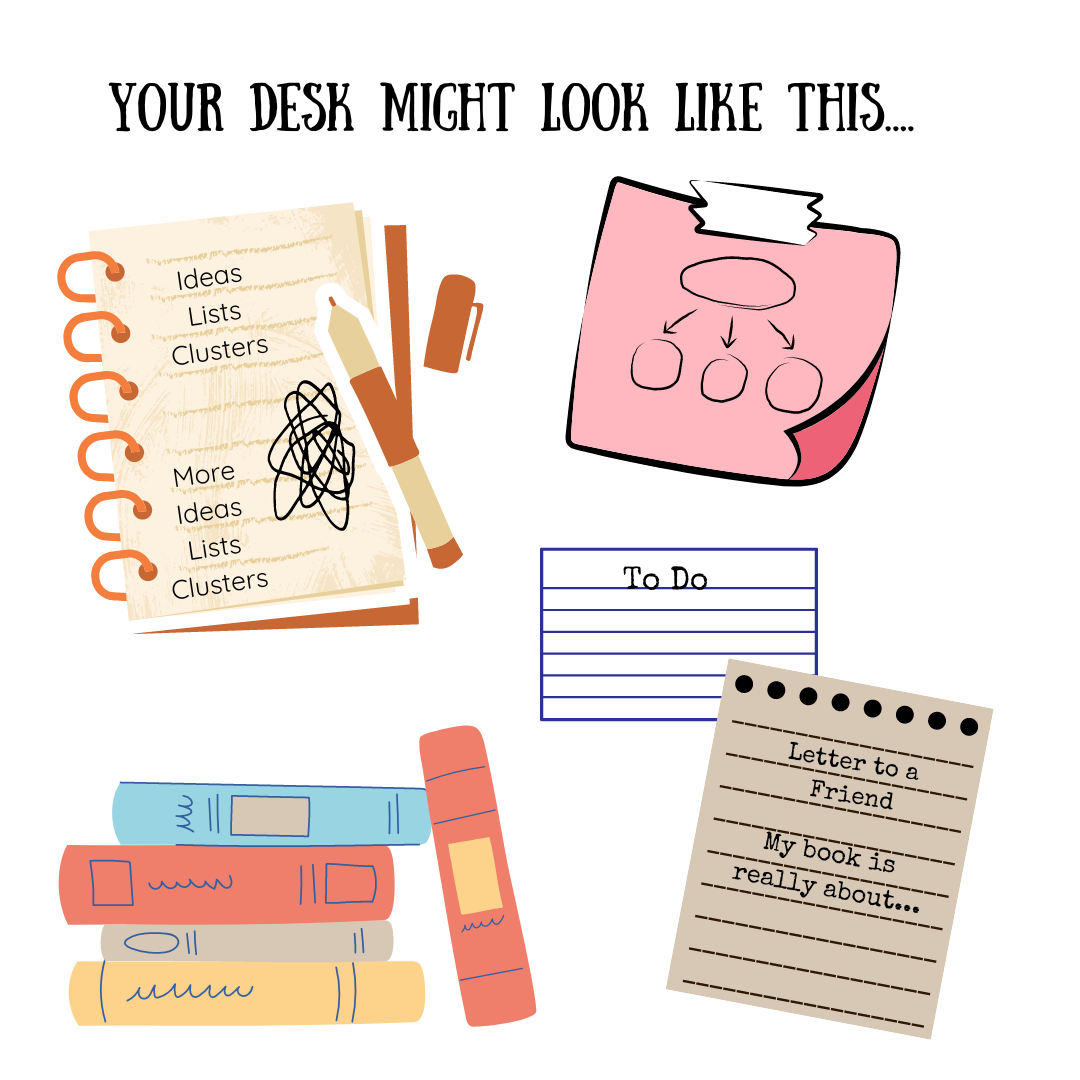How to Write a Really Creative First Draft
One of my best friends can send me something that’s really “drafty,” and I’ll laugh and think, “She’s right. That’s barely an idea, but I can see where it’s headed.” Sometimes it’s two lines of dialogue. Other times it’s a title and a paragraph. Or it’s a couple paragraphs that don’t go anywhere and don’t have transitions. Maybe it’s a wordless sketch or a thumbnail with a silly joke scribbled in the margins.
Getting to see and appreciate those early drafts is one of the marvelous things about being creatively compatible with someone. But we often struggle to trust ourselves with those drafty drafts. Or we don’t know how to move from those tiny glimmers to a full rough draft, without tightening up, slipping into polishing, getting paralyzed, or losing the life of the piece.
A Unique Stage
We may want to rush to finish, so we can submit a piece and see it out in the world. I get that temptation. I really do. But there’s a lot of value in staying in the rough-draft stage. This is where much of the original work is done. It’s when you’re daydreaming, asking questions, and thinking deeply. It’s where you discover the themes and poetic phrases. It’s where you sprinkle clues for your future self to connect during the revision process. If you keep it loose and messy, you might surprise yourself.
Step by Step
It’s one thing to say, “Don’t rush.” It’s another thing to let yourself actually do it. So how do you write a first draft without getting caught up polishing the language?
Gather Ideas
Take the reading, note taking, and idea gathering stage seriously. Treat it as work. Schedule it, if that’s your thing. Just make time to get inspired. Sometimes it can feel like you’re approaching a project from the side or sneaking up on it. That’s ok. Real writers work on laptops and tippy tap out lots of words. But they also read, gaze out the window, write question marks in the margins, take notes that may or may not mean something, and circle words that feel intriguing. This is important work too.
Write by Hand
Whether you’re writing a poem, a story, or a song, I recommend telling it to yourself in your head when you’re driving, out on walks, or in the shower. Then work on paper as long as possible. Avoid jumping into computer work. It’s too easy to start cutting, pasting, inserting, looking something up, and grabbing the thesaurus. There will be plenty of time for that. The longer you can avoid that stage, the more fully formed your ideas will be.
Try Whatever Works
Also feel free to play around with different mediums if that helps. Write on post it notes. Record ideas into your phone. Work in the Notes app. Fill a box with index cards. The point is to gather ideas without forcing them to take shape.
Brainstorm Alternatives
At the Emily Dickinson house, they have an interactive poem on the wall that shows how Emily (or you) would swap different words in and out of each line. When you’re writing on paper, liberally use lists and clusters. If you can’t decide on the perfect word, good! Write them all down. If you aren’t loving a plot point, brainstorm 10 alternatives. You can write in the margins. Make a mini mind map. Or use lots of space to write something that isn’t linear, and probably doesn’t make sense to anyone else, but gives you lots of options.
Save Everything
Once you’re in the computer stage, save each draft separately. But also keep a scraps file, so you don’t have to worry about cutting and losing good ideas. You can always go back to old drafts or use sentences and phrases somewhere else.
Keep a List
Don’t fact check or do any more research than is necessary to keep things moving. I like to keep a to-do list or add notes in the margin, so I know to come back to those elements that need more attention.
Step Back
When you need a little distance, I find it helps to journal about the piece or write a letter or email to a friend describing the project. Look back on all your notes and try to identify the most important idea and if it’s coming through.
Trust Yourself
You know more than you think you do. You don’t need to read any more craft books. You don’t need to take another class. There’s not one perfect way to write a book. And everyone is muddling through and figuring this out together. The point isn’t to follow the rules. The point is to create something new and exciting! You don’t need to prove yourself with this draft (or any other honestly). Everything is fixable, either by you or with the help of a friend or an editor. The most important thing is to let yourself explore, play, and say something only you can say.
If these ideas are helpful to you, you can download the full guide to writing a truly creative first draft below.






